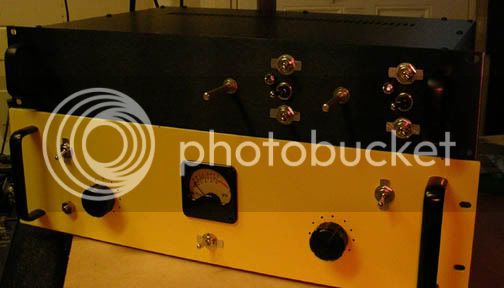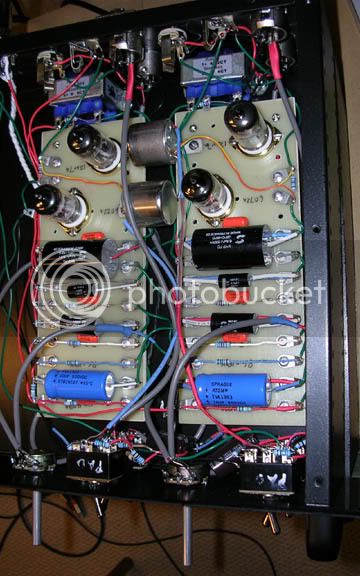pantsonfire
Active member
Hello- I have been building this, my first micpre for the past couple of months, and it's almost done. In fact it may be done, but I'm having a very hard time troubleshooting a high pitched sound coming from the tubes.
Here's the schematic if it's helpful:
http://www.hamptone.com/figure1.htm
Anyway, this is a 2 channel box I've made, and both channels are exhibiting the same behavior at the same point. when I turn the gain knob up, the amp is quiet from a starting point of 6 o'clock until about 2 o'clock. At this point one, or maybe both, of the tubes in the channel starts to emit a high pitched whining sound that lowers in pitch a little until about 3 o'clock and then starts what I think is called oscillating. It sounds like an ant's motorboat. The troubling sound occurs in the last 20% or so of the gain knob's range.
I have also found that corresponding to the behavior above, the stage 1 plate voltage on the 6072a remains steady at 106VDC until the noise appears, wavers a bit, and then increases to 161VDC. If the 20db pad is engaged, the sound is less present, and the voltage only increase to a maximum of 138VDC.
Weird?
Just so I'm being clear, the signal is actually coming from the tube(s). You can hear it in the signal path (both channels pass audio) but you can also hear it just sitting near the box with nothing plugged into it.
I have to say, I'm using crappy Ratshack pots right now. Audio taper. I'm ordering a pair of stepped attenuator kits from Marchand, but I figured I could find a use for the pre in the meantime even if the pots aren't great.
Could the low rent pots be the problem?
The pad switch?
I'm pretty sure it's grounded all around, but one never knows until one finds that little broken wire, eh?
Thanks in advance for any help any of you can offer.
Best,
Chris.
Here's the schematic if it's helpful:
http://www.hamptone.com/figure1.htm
Anyway, this is a 2 channel box I've made, and both channels are exhibiting the same behavior at the same point. when I turn the gain knob up, the amp is quiet from a starting point of 6 o'clock until about 2 o'clock. At this point one, or maybe both, of the tubes in the channel starts to emit a high pitched whining sound that lowers in pitch a little until about 3 o'clock and then starts what I think is called oscillating. It sounds like an ant's motorboat. The troubling sound occurs in the last 20% or so of the gain knob's range.
I have also found that corresponding to the behavior above, the stage 1 plate voltage on the 6072a remains steady at 106VDC until the noise appears, wavers a bit, and then increases to 161VDC. If the 20db pad is engaged, the sound is less present, and the voltage only increase to a maximum of 138VDC.
Weird?
Just so I'm being clear, the signal is actually coming from the tube(s). You can hear it in the signal path (both channels pass audio) but you can also hear it just sitting near the box with nothing plugged into it.
I have to say, I'm using crappy Ratshack pots right now. Audio taper. I'm ordering a pair of stepped attenuator kits from Marchand, but I figured I could find a use for the pre in the meantime even if the pots aren't great.
Could the low rent pots be the problem?
The pad switch?
I'm pretty sure it's grounded all around, but one never knows until one finds that little broken wire, eh?
Thanks in advance for any help any of you can offer.
Best,
Chris.




